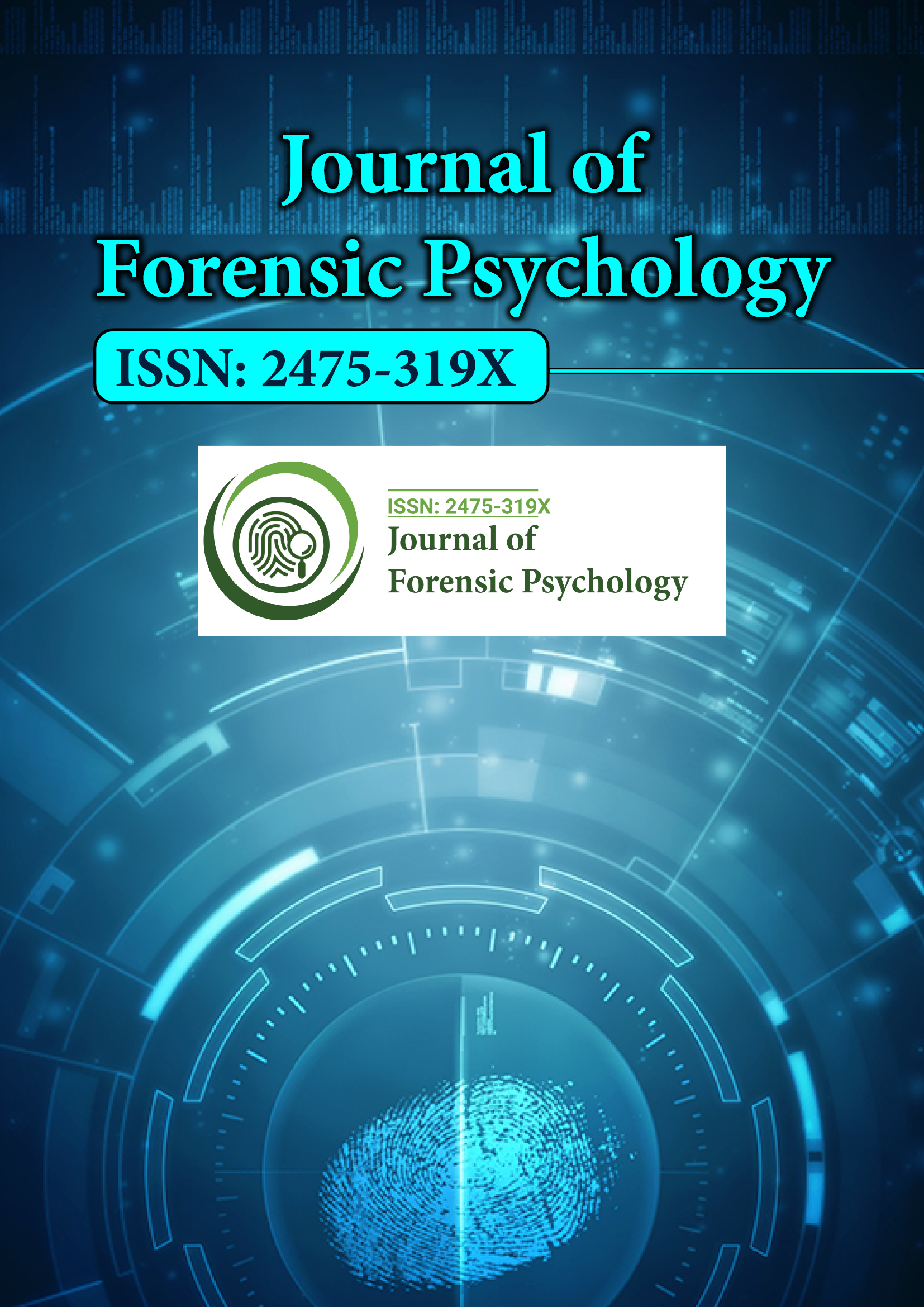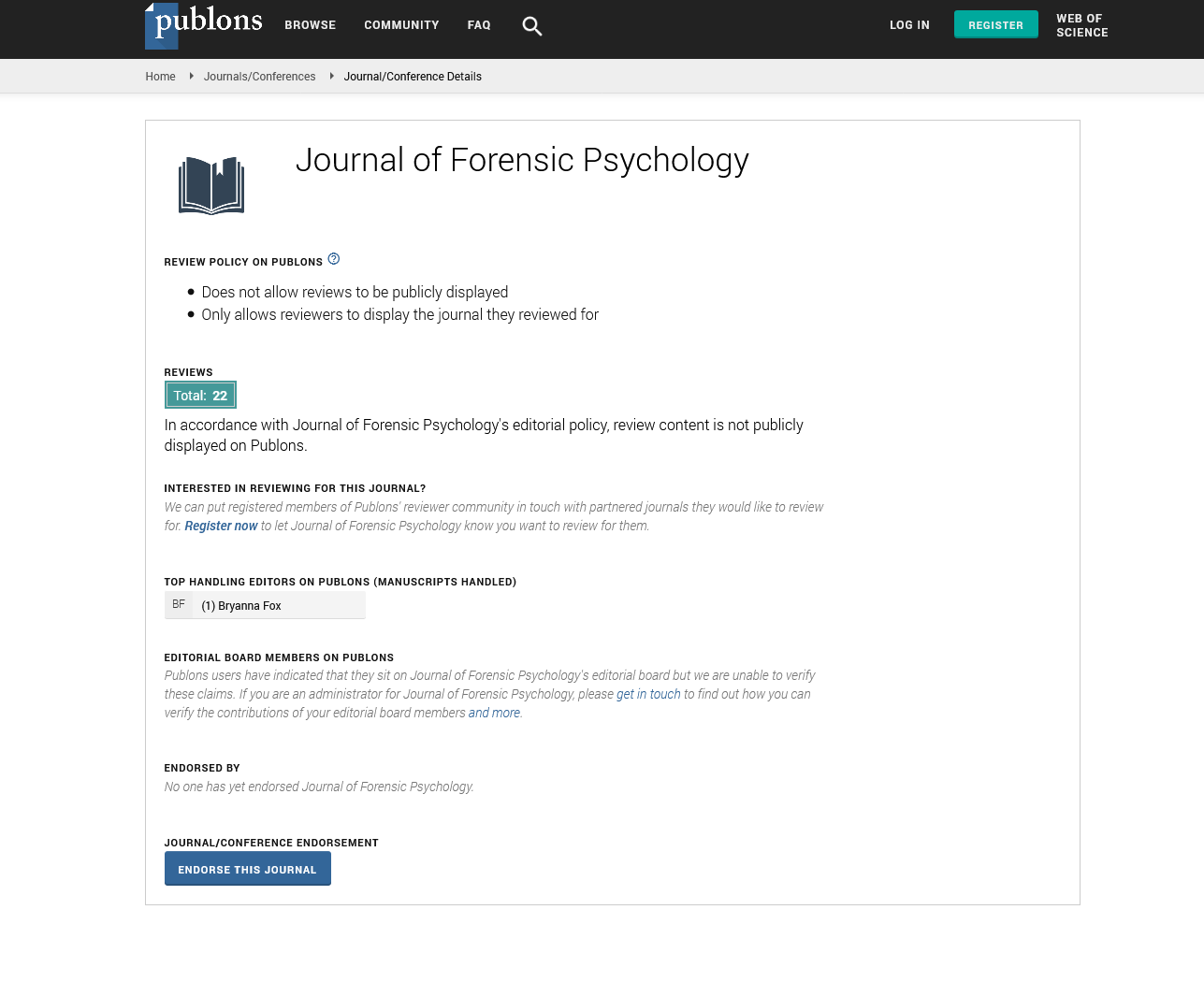Indexed In
- RefSeek
- Hamdard University
- EBSCO A-Z
- Publons
- Geneva Foundation for Medical Education and Research
- Euro Pub
- Google Scholar
Useful Links
Share This Page
Journal Flyer

Open Access Journals
- Agri and Aquaculture
- Biochemistry
- Bioinformatics & Systems Biology
- Business & Management
- Chemistry
- Clinical Sciences
- Engineering
- Food & Nutrition
- General Science
- Genetics & Molecular Biology
- Immunology & Microbiology
- Medical Sciences
- Neuroscience & Psychology
- Nursing & Health Care
- Pharmaceutical Sciences
Commentary - (2022) Volume 7, Issue 11
Methods of Treatment for Violent Adolescents
Klaus Schmeck*Received: 01-Nov-2022, Manuscript No. JFPY-22-19085; Editor assigned: 03-Nov-2022, Pre QC No. JFPY-22-19085 (PQ); Reviewed: 17-Nov-2022, QC No. JFPY-22-19085; Revised: 24-Nov-2022, Manuscript No. JFPY-22-19085 (R); Published: 01-Dec-2022, DOI: 10.35248/2475-319X.22.7.254
Description
There have been numerous attempts to treat and rehabilitate juvenile offenders throughout the contemporary history of juvenile justice. By the 1980s, therapeutic nihilism had set in due to the significant failure of the majority of these endeavours [1]. However, in recent years, there has been a resurgence of hope in the effectiveness of young offenders' rehabilitation and therapy. Numerous thorough meta-analyses of studies have looked at the efficiency of various treatment modalities in lowering teenagers' propensity for violence in the future. Write that there is conflicting data on the superiority of Multisystemic Therapy (MST) over other interventions after reading the randomised controlled studies of MST. However, according to some studies, there is a tonne of proof that MST and other treatments are successful in greatly lowering the likelihood of future violence. Revealed that among male and female juveniles aged 12 to 17, MST significantly reduces violent offending. They found that there was a statistically significant overall treatment effect in their thorough meta-analysis of 200 therapy studies, with some techniques offering tremendous promise. The best treatment outcomes in the meta-analysis had a first-year recidivism rate of 30% as opposed to control groups' 50% rate. The most successful treatment plans for community groups included various services, individual counseling, cognitive behavioral therapy, and interpersonal skills training [2]. Although a moderate treatment effect could be proven, the authors came to the conclusion that even 200 studies would not be enough to draw any definite conclusions given the variety of treatment programme combinations.
The history of violence prevention and treatment programmes with no shown efficacy was addressed in the Surgeon General's report on teenage violence. After reviewing successful programmes, they chose Level 1 programmes that showed a decrease in major delinquent or violent behaviour and Level 2 programmes that showed a decrease in known risk factors for violent behaviour. Replication of data at multisite or clinical trials, evidence of considerable deterrent effects, and strict experimental designs served as the foundation for the conclusions [3]. There were three categories of preventative programmes: basic, secondary, and tertiary. Teenagers who were already engaging in violent or seriously delinquent behaviour were the target audience for tertiary preventive programmers. The analysis came to two key results. First, treatment could prevent a sizable fraction of aggressive youth from engaging in violent behaviour in the future. Second, there was a clear disparity between the efficacies of various programme types.
The Surgeon General Report described "model programmes" that used a strict experimental methodology and produced violent deterrent effects that could be repeated. "Multisystemic therapy," "functional family therapy," and multidimensional foster care were among the tertiary preventive model programmes geared for young people who were already engaging in antisocial or violent behaviour. "Promising programmes" used a rigorous experimental approach that showed deterrent effects that could be duplicated for every risk factor for violent behaviour. Tertiary programmes that were ineffective were also noted. These included residential programmes, social casework, and "boot camps." Waiving adolescents to adult court has been demonstrated to increase recidivism among those juveniles who had been waived, contrary to the stated goals of reducing crime, and to expose them to higher rates of physical harm from other adult jail inmates. When compared to adult defendants, adolescents who had their charges waived had considerably greater rates of attempted and successful suicide while in detention [4-6].
Even though empirical studies to date have shown only a modest improvement in treatment outcomes for violent adolescents, advances in pediatrics psychopharmacology are likely to boost these results by focusing on particular risk factors, such as impulsivity, attention deficits, and underlying psychiatric conditions linked to violence. The pharmaceutical methods for treating teenage violence are summarized by Connor. Both the use of neuroleptics for conduct disorder and attention-deficit hyperactivity disorder as well as the use of stimulants for psychotic illnesses and disruptive behaviour disorders has substantial scientific evidence. Mood stabilizers have also shown promising outcomes. There is reason to expect that combining psychosocial treatments with specific pharmacological interventions will improve compliance and ultimately increase efficacy, even though it would be reductionist to think that pharmacological treatments by themselves would have a significant impact on individual aggression.
References
- Oladeji D, Adegoke TG. Personal, situational and socio-cultural factors as correlates of intimates partner abuse in Nigeria. Journal of Social Sciences. 2008;16(1):57-62.
- Basile KC, Black MC, Breiding MJ, Chen J, Merrick MT, Smith SG et al. National intimate partner and sexual violence survey: 2010 summary report.
- Garcia-Moreno C, Jansen HA, Ellsberg M, Heise L, Watts CH. Prevalence of intimate partner violence: findings from the WHO multi-country study on women's health and domestic violence. The lancet. 2006; 368(9543):1260-1269.
- Serkalem B. Divorce: Its causes and impact on the lives of divorced women and their children a comparative study between divorced and intact families. Addis Ababa: University School of Graduate Studies. 2006 .
- Igbinovia P. Causes and effects of Divorce in Benin Metropolitan Area.
- Osiki JO. Marital duration, age, and childlessness as they affect marital happiness. Nigeria Journal of Clinical. 1995.
Citation: Schmeck K (2022) Methods of Treatment for Violent Adolescents. J Foren Psy. 7:254.
Copyright: © 2022 Schmeck K. This is an open-access article distributed under the terms of the Creative Commons Attribution License, which permits unrestricted use, distribution, and reproduction in any medium, provided the original author and source are credited.

